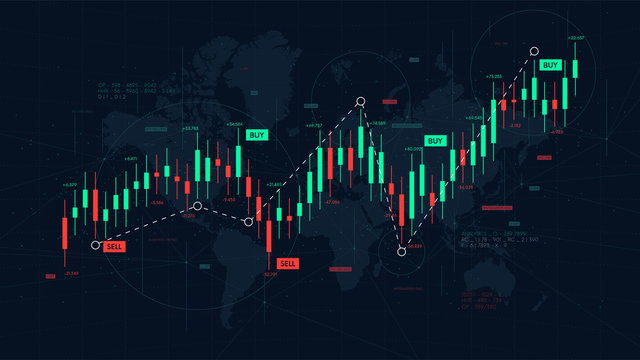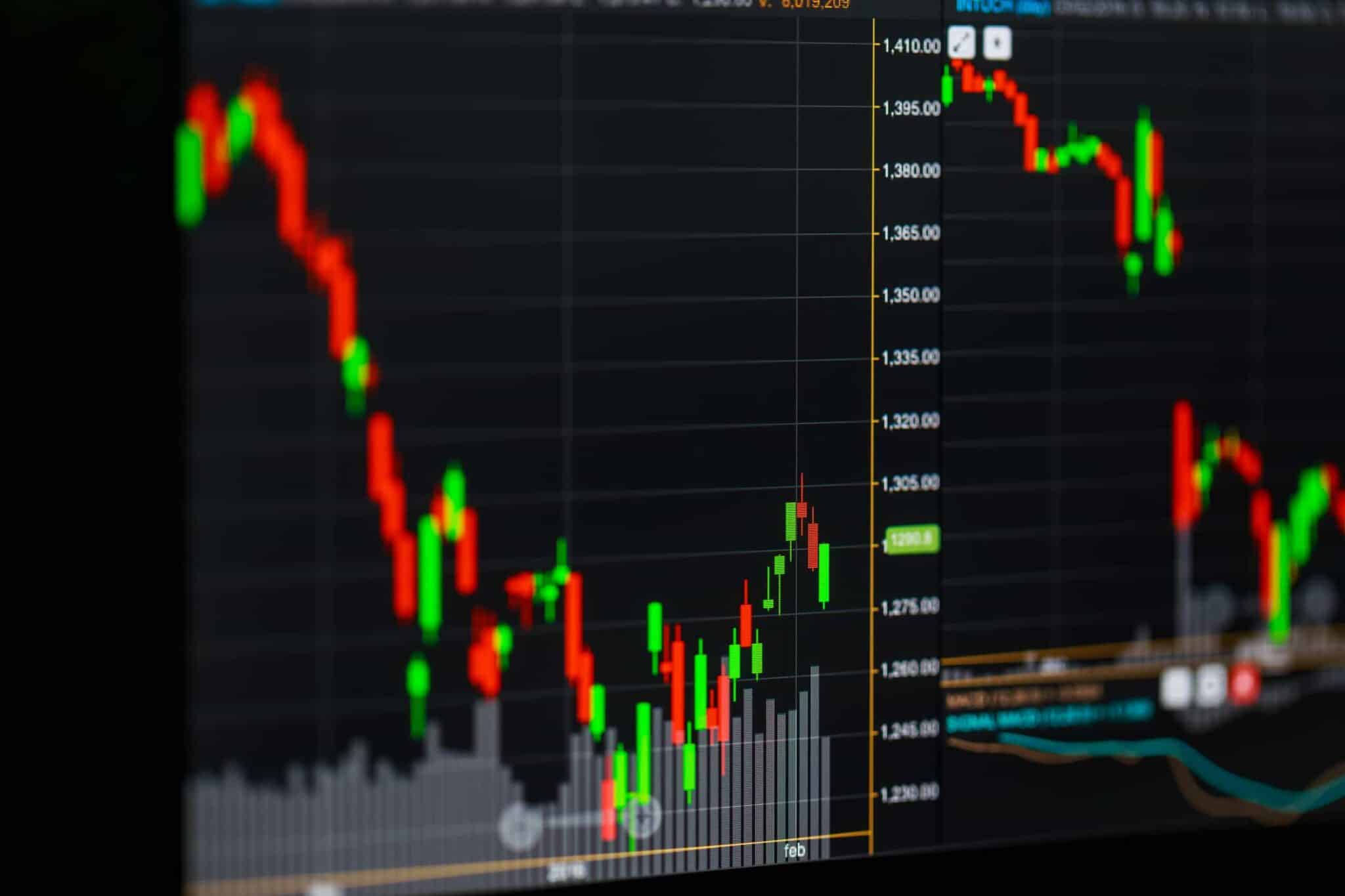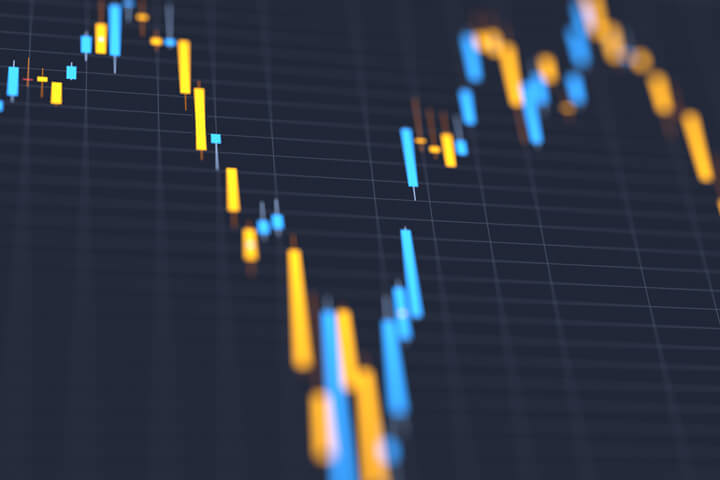

Forex
How to Predict Currency Movements: A Sophisticated Guide to Navigating the Forex Market
![]()
In the world of global finance, few arenas command as much attention and respect as the foreign exchange (forex) market. With trillions of dollars traded daily, currency movements serve as the lifeblood of international commerce, investment, and geopolitical stability. For those who value precision, foresight, and a deep understanding of economic forces, predicting currency movements is both an art and a science—a pursuit that requires intellectual rigor and unwavering discipline.
Much like the seasoned captains of industry who have mastered the intricacies of stock markets or real estate, successful forex traders rely on a combination of analytical tools, historical patterns, and intuitive judgment. In this article, we will explore the methodologies and strategies used to predict currency movements, offering insights tailored for the discerning investor who seeks to navigate this dynamic landscape with confidence and sophistication.
The Fundamentals of Currency Prediction: Understanding the Drivers
Before delving into specific techniques, it is imperative to grasp the foundational factors that influence currency movements. These drivers can be broadly categorized into three domains: economic indicators, geopolitical events, and market sentiment. Each plays a pivotal role in shaping the trajectory of a nation’s currency.
1. Economic Indicators: The Backbone of Analysis
Economic data serves as the cornerstone of currency prediction. Key metrics include:
- Interest Rates: Central banks wield immense power over currency values through monetary policy decisions. Higher interest rates typically attract foreign capital, strengthening a currency, while lower rates may weaken it.
- Gross Domestic Product (GDP): A robust GDP growth rate signals economic vitality, often bolstering investor confidence and driving demand for the associated currency.
- Inflation Rates: Moderate inflation is generally favorable, but excessive inflation erodes purchasing power, undermining a currency’s value. Conversely, deflation can also signal economic stagnation.
- Employment Data: Strong job creation figures reflect economic health, fostering optimism among investors and supporting currency appreciation.
These indicators are released periodically by government agencies and central banks, providing traders with critical insights into the underlying strength or weakness of an economy.
2. Geopolitical Events: The Unpredictable Variable
Geopolitical developments—such as elections, trade agreements, sanctions, or military conflicts—can introduce volatility into the forex market. For instance, political instability may lead to capital flight, weakening a nation’s currency, while diplomatic breakthroughs could instill confidence and drive appreciation.
3. Market Sentiment: The Human Element
Beyond hard data, human psychology plays a significant role in currency movements. Risk appetite, fear, and speculation often drive short-term fluctuations. Tools such as the Commitments of Traders (COT) report provide glimpses into how institutional investors are positioning themselves, offering clues about future trends.
Technical Analysis: Decoding Price Patterns
For many seasoned traders, technical analysis represents the bedrock of their predictive toolkit. This approach focuses on historical price data and chart patterns, leveraging statistical models to identify recurring trends. Below are some widely used techniques:
1. Trend Lines and Support/Resistance Levels
Trend lines help visualize the direction of a currency pair’s movement, distinguishing between uptrends, downtrends, and sideways consolidations. Meanwhile, support and resistance levels act as psychological barriers where prices tend to reverse or consolidate. Identifying these zones allows traders to anticipate potential turning points.
2. Moving Averages
Moving averages smooth out price fluctuations, revealing longer-term trends. Popular variations include the Simple Moving Average (SMA) and Exponential Moving Average (EMA). When shorter-term averages cross above longer-term ones, it generates a bullish signal; conversely, bearish signals occur when the opposite happens.
3. Oscillators: RSI and MACD
Oscillators measure momentum and overbought/oversold conditions. The Relative Strength Index (RSI) indicates whether a currency is poised for a reversal due to exhaustion, while the Moving Average Convergence Divergence (MACD) highlights shifts in momentum through crossovers and divergences.
4. Candlestick Patterns
Japanese candlestick charts offer rich visual cues about market psychology. Patterns such as “doji,” “hammer,” and “shooting star” provide early warnings of potential reversals or continuations, enabling traders to make informed decisions.
While technical analysis excels at identifying short- to medium-term opportunities, it must be complemented by fundamental insights to ensure a holistic view of the market.
Fundamental Analysis: Peering Beneath the Surface
Where technical analysis examines surface-level price action, fundamental analysis delves deeper, assessing the intrinsic value of a currency based on macroeconomic factors. This method appeals particularly to long-term investors who prioritize sustainability over fleeting gains.
1. Central Bank Policies
Central banks are the guardians of national currencies, wielding tools such as interest rate adjustments and quantitative easing to achieve their mandates. Statements from officials during press conferences or policy meetings frequently trigger sharp moves in the forex market. Savvy traders pay close attention to nuances in language, interpreting phrases like “hawkish” (indicating tighter policy) or “dovish” (suggesting looser policy).
2. Trade Balances and Current Account Deficits
A country’s trade balance—the difference between exports and imports—provides insight into its economic competitiveness. Persistent deficits may weigh on a currency, as they imply reliance on foreign funding. Conversely, surpluses often bolster confidence and strengthen the domestic currency.
3. Debt Levels and Fiscal Policy
High levels of public debt can undermine investor trust, leading to capital outflows and currency depreciation. Similarly, irresponsible fiscal policies—such as excessive spending without corresponding revenue generation—pose risks to long-term stability.
4. Commodity Prices
For nations heavily reliant on commodity exports—such as Canada (oil), Australia (minerals), or New Zealand (agriculture)—currency values are closely tied to global commodity prices. Rising oil prices, for example, tend to benefit the Canadian dollar (CAD), while falling prices exert downward pressure.
Sentiment Analysis: Gauging the Mood of the Market
Modern technology has ushered in new ways to gauge market sentiment, allowing traders to tap into collective emotions and expectations. Social media platforms, news outlets, and financial blogs generate vast amounts of data that can be analyzed using natural language processing (NLP) algorithms.
Additionally, indices such as the U.S. Dollar Index (DXY) or the Volatility Index (VIX) offer quantifiable measures of risk appetite and uncertainty. Elevated VIX readings often coincide with heightened volatility, prompting caution among traders.
Challenges and Pitfalls: Navigating the Complexities
Predicting currency movements is not without its challenges. Even the most astute analysts encounter obstacles, including:
1. Black Swan Events
Unforeseen crises—such as pandemics, natural disasters, or sudden regime changes—can disrupt even the most meticulously crafted forecasts. These rare occurrences remind us of the inherent unpredictability of financial markets.
2. Information Overload
With countless variables influencing currency values, separating signal from noise is no easy task. Successful traders cultivate the ability to focus on the most relevant factors while filtering out distractions.
3. Leverage Risks
The forex market’s high liquidity and accessibility make it tempting to employ leverage, amplifying both profits and losses. Prudent risk management is essential to avoid catastrophic outcomes.
Conclusion: Mastery Through Discipline and Insight
Predicting currency movements is neither a matter of luck nor blind intuition—it is a disciplined practice rooted in rigorous analysis and strategic thinking. Whether you prefer the elegance of technical charts or the depth of fundamental research, success hinges on your ability to adapt to changing circumstances while maintaining a steadfast commitment to excellence.
As the global economy continues to evolve, so too will the dynamics of the forex market. Those who embrace lifelong learning and remain attuned to emerging trends will find themselves well-positioned to thrive in this ever-shifting arena.
So, dear reader, whether you are a seasoned financier or an aspiring trader, remember this: the path to mastery lies not in chasing quick wins but in cultivating wisdom, patience, and resilience. The forex market awaits—will you rise to the challenge?
Forex
What is Delta Volume and How to Use It?

![]()
In the fast-paced world of trading, understanding market dynamics is crucial for making informed decisions. One tool that has gained significant traction among traders is Delta Volume, a metric that provides insights into the balance of buying and selling pressure in the market. Whether you’re a seasoned trader or just starting out, mastering Delta Volume can elevate your trading strategy by helping you identify trends, predict reversals, and confirm breakouts. In this article, we’ll explore what Delta Volume is, how it works, and how you can effectively incorporate it into your trading toolkit.
What is Delta Volume?
Delta Volume, often referred to as Volume Delta, is a technical indicator that measures the difference between buying volume and selling volume within a specific time frame. It highlights whether buyers or sellers are dominating the market during a given period. This information is invaluable for traders because it reveals the underlying strength or weakness of price movements.
Key Components of Delta Volume
- Buying Volume: The total volume of trades initiated by buyers (demand).
- Selling Volume: The total volume of trades initiated by sellers (supply).
- Delta Value: The net difference between buying and selling volume. A positive delta indicates more buying pressure, while a negative delta suggests stronger selling pressure.
Delta Volume is particularly useful in markets with high liquidity, such as stocks, futures, and cryptocurrencies, where large volumes of trades occur frequently. By analyzing these imbalances, traders can gain a deeper understanding of market sentiment and make better-informed decisions.
How Does Delta Volume Work?
Delta Volume operates on the principle that not all volume is created equal. While traditional volume indicators simply show the total number of shares or contracts traded, Delta Volume breaks this data down further to reveal who is driving the activity—buyers or sellers.
Example Scenario
Imagine a stock trading at $50 per share:
- If 1,000 shares are bought at the ask price (indicating buyer aggression) and 600 shares are sold at the bid price, the Delta Volume would be +400.
- Conversely, if 800 shares are sold at the bid price and only 300 shares are bought at the ask price, the Delta Volume would be -500.
This granular view helps traders assess whether a price move is supported by strong demand (positive delta) or supply (negative delta).
Why is Delta Volume Important?
Delta Volume is more than just a number—it’s a powerful tool for interpreting market behavior. Here’s why it matters:
1. Identifying Trend Strength
A rising price accompanied by a positive Delta Volume suggests strong buying interest, indicating that the uptrend is likely to continue. Similarly, a falling price with a negative Delta Volume signals sustained selling pressure, reinforcing the downtrend.
2. Spotting Divergences
Divergences between price action and Delta Volume can signal potential reversals. For example:
- If prices are rising but Delta Volume is declining, it may indicate waning buying interest, hinting at an impending pullback.
- Conversely, if prices are falling but Delta Volume turns positive, it could suggest accumulation by buyers, foreshadowing a rebound.
3. Confirming Breakouts
Breakouts often attract significant attention from traders. A breakout accompanied by a strong Delta Volume confirms that the move is legitimate and driven by real market participation. On the other hand, a breakout with weak Delta Volume might be a false signal.
4. Gauging Market Sentiment
Delta Volume provides real-time insights into whether bulls (buyers) or bears (sellers) are in control. This sentiment analysis is critical for short-term traders looking to capitalize on intraday opportunities.
How to Use Delta Volume Effectively
To harness the full potential of Delta Volume, you need to know how to interpret its signals and integrate them into your trading strategy. Here’s a step-by-step guide:
Step 1: Combine Delta Volume with Price Action
Delta Volume should never be used in isolation. Instead, pair it with price charts to validate your observations. For instance:
- Look for bullish divergences (price falls, Delta Volume rises) to anticipate upward reversals.
- Watch for bearish divergences (price rises, Delta Volume falls) to prepare for downward corrections.
Step 2: Monitor Cumulative Delta
Cumulative Delta tracks the running total of Delta Volume over time, providing a broader perspective on market sentiment. A steadily increasing cumulative delta indicates sustained buying pressure, while a declining cumulative delta points to prolonged selling activity.
Step 3: Focus on Key Levels
Pay close attention to Delta Volume near support and resistance levels. Significant buying or selling volume at these zones can confirm breakouts or breakdowns. For example:
- A breakout above resistance with a surge in positive Delta Volume validates the move.
- A breakdown below support with heavy negative Delta Volume reinforces the decline.
Step 4: Adjust Timeframes
Delta Volume can be applied across various timeframes, depending on your trading style:
- Intraday Traders: Use shorter timeframes (e.g., 1-minute, 5-minute) to capture quick shifts in momentum.
- Swing Traders: Analyze hourly or daily charts to identify medium-term trends.
- Position Traders: Examine weekly or monthly Delta Volume for long-term insights.
Step 5: Incorporate Other Indicators
While Delta Volume is powerful, combining it with complementary indicators like moving averages, RSI (Relative Strength Index), or MACD (Moving Average Convergence Divergence) can enhance accuracy. For example:
- A bullish crossover on the MACD paired with a positive Delta Volume strengthens the case for entering a long position.
Common Mistakes to Avoid When Using Delta Volume
Even experienced traders sometimes misinterpret Delta Volume. Here are some pitfalls to watch out for:
1. Overreliance on Delta Volume Alone
Delta Volume is a supplementary tool, not a standalone solution. Always cross-reference it with other forms of analysis to avoid false signals.
2. Ignoring Context
Delta Volume readings must be interpreted within the context of the broader market environment. For example, low liquidity during pre-market or after-hours sessions can distort Delta Volume values.
3. Misreading Divergences
Not every divergence leads to a reversal. Sometimes, divergences merely reflect temporary consolidations before the trend resumes.
4. Failing to Adapt to Market Conditions
Delta Volume behaves differently in trending versus ranging markets. In trending markets, focus on confirming momentum. In ranging markets, use Delta Volume to identify exhaustion points.
Benefits of Using Delta Volume
1. Enhanced Decision-Making
By revealing the true forces behind price movements, Delta Volume empowers traders to make smarter, data-driven decisions.
2. Early Warning Signals
Delta Volume often detects shifts in market sentiment before they manifest in price action, giving traders a head start.
3. Versatility Across Markets
Whether you trade stocks, forex, commodities, or cryptocurrencies, Delta Volume adapts seamlessly to different asset classes.
4. Transparency
Unlike some proprietary indicators, Delta Volume relies on raw market data, ensuring transparency and reliability.
Challenges of Using Delta Volume
Despite its advantages, Delta Volume isn’t without limitations:
1. Complexity for Beginners
Understanding Delta Volume requires familiarity with order flow dynamics, which can be daunting for novice traders.
2. Availability of Data
Accessing detailed Delta Volume data typically requires advanced charting platforms like TradingView, Sierra Chart, or NinjaTrader. These tools may come with subscription fees.
3. Noise in High-Frequency Trading
In highly volatile markets, Delta Volume can become noisy, making it harder to extract meaningful insights.
Conclusion: Unlocking the Power of Delta Volume
Delta Volume is a game-changer for traders seeking to decode market psychology and stay ahead of the curve. By analyzing the interplay between buying and selling pressure, it provides a unique lens through which to view price action. However, like any tool, its effectiveness depends on proper application and integration with other analytical methods.
For traders worldwide, mastering Delta Volume represents an opportunity to refine strategies, minimize risks, and maximize returns. As you embark on your journey, remember that success lies not just in understanding the numbers but in interpreting their implications within the broader market narrative.
So, take the time to experiment with Delta Volume, test its signals, and refine your approach. With practice and patience, you’ll unlock its full potential and gain a competitive edge in today’s dynamic financial markets.
Your next trade could be your best one yet—with Delta Volume guiding the way.
Forex
What Are Swing Highs and Swing Lows in Market Structure? A Comprehensive Guide for TradingView Users

![]()
For traders who rely on TradingView to analyze financial markets, understanding the concept of swing highs and swing lows is essential. These terms are foundational to market structure analysis and play a critical role in identifying trends, reversals, and potential trading opportunities. Whether you’re a beginner or an experienced trader, mastering these concepts will enhance your ability to interpret price action and make informed decisions.
This article dives into what swing highs and swing lows are, their significance in market structure, and how to use them effectively on TradingView. By the end of this guide, you’ll have a clear understanding of how to identify and leverage these key price points to improve your trading strategy.
What Are Swing Highs and Swing Lows?
In technical analysis, swing highs and swing lows refer to specific points on a price chart where the market makes noticeable peaks (highs) or troughs (lows). These points are critical because they help traders identify the underlying structure of the market, including trends, support and resistance levels, and potential reversal zones.
1. Swing High
A swing high occurs when a price reaches a peak that is higher than the prices immediately before and after it. Visually, it looks like a hill on the chart. To qualify as a swing high:
- The price must rise to a certain level.
- It must then reverse and fall below the previous price levels.
For example, if the price moves from $50 to $60 and then drops back to $55, the $60 level is considered a swing high.
2. Swing Low
Conversely, a swing low occurs when a price reaches a trough that is lower than the prices immediately before and after it. This looks like a valley on the chart. To qualify as a swing low:
- The price must decline to a certain level.
- It must then reverse and rise above the previous price levels.
For instance, if the price falls from $50 to $40 and then rallies back to $45, the $40 level is considered a swing low.
Why Are Swing Highs and Swing Lows Important?
Swing highs and swing lows are more than just visual markers; they provide valuable insights into market behavior and structure. Here’s why they matter:
1. Identifying Trends
Swing highs and swing lows are instrumental in determining whether a market is trending or ranging:
- Uptrend: In an uptrend, each successive swing high is higher than the previous one, and each swing low is also higher than the prior low. This pattern indicates bullish momentum.
- Downtrend: In a downtrend, each successive swing low is lower than the previous one, and each swing high is lower than the prior high. This signals bearish momentum.
- Ranging Market: When swing highs and swing lows remain relatively flat, the market is likely consolidating within a range.
By analyzing these patterns, traders can confirm the direction of the trend and align their strategies accordingly.
2. Support and Resistance Levels
Swing highs and swing lows often act as natural support and resistance zones. For example:
- A swing high may serve as resistance, where price struggles to break above during subsequent attempts.
- A swing low may act as support, providing a floor that prevents further declines.
These levels are particularly useful for setting stop-loss orders, profit targets, and entry points.
3. Reversal Signals
When a swing high or swing low is broken, it can signal a potential reversal in the market. For instance:
- Breaking above a swing high in an uptrend suggests continued bullish momentum.
- Breaking below a swing low in a downtrend confirms bearish continuation.
Traders can use these breakouts to anticipate shifts in market sentiment and adjust their positions.
4. Building Indicators
Many popular indicators, such as moving averages, Fibonacci retracements, and pivot points, rely on swing highs and swing lows for calculations. Understanding these concepts allows you to better interpret and customize your TradingView tools.
How to Identify Swing Highs and Swing Lows on TradingView
TradingView provides several tools and techniques to help you identify swing highs and swing lows effectively. Here’s how you can do it:
1. Visual Inspection
The simplest way to identify swing highs and swing lows is by visually scanning the chart. Look for obvious peaks (swing highs) and valleys (swing lows). You can zoom in or out to get a clearer perspective of the overall structure.
2. Using Trendlines
Trendlines are excellent tools for connecting swing highs and swing lows. On TradingView:
- Draw an upward-sloping trendline by connecting consecutive swing lows in an uptrend.
- Draw a downward-sloping trendline by connecting consecutive swing highs in a downtrend.
These trendlines not only highlight the market structure but also act as dynamic support and resistance levels.
3. Leveraging Built-In Tools
TradingView offers several built-in features that automatically detect swing highs and swing lows:
- Zigzag Indicator: The Zigzag tool simplifies the process by plotting lines between significant swing highs and swing lows. To access it, go to “Indicators” and search for “Zigzag.”
- Fractals Indicator: Fractals are mathematical patterns that highlight potential swing highs and swing lows. They appear as arrows above or below candlesticks, indicating fractal highs and lows.
4. Customizing Alerts
You can set up alerts on TradingView to notify you when price breaks above a swing high or below a swing low. This feature ensures you don’t miss critical turning points in the market.
Practical Applications of Swing Highs and Swing Lows
Once you’ve identified swing highs and swing lows, you can apply this knowledge in various ways to enhance your trading strategy. Below are some practical examples:
1. Trend Confirmation
Use swing highs and swing lows to confirm the direction of the trend:
- In an uptrend, wait for price to form a new swing high before entering long positions.
- In a downtrend, look for new swing lows to validate short-selling opportunities.
2. Breakout Trading
Breakouts occur when price surpasses a swing high or swing low. For example:
- If price breaks above a swing high, consider going long with a stop-loss below the most recent swing low.
- If price breaks below a swing low, consider going short with a stop-loss above the most recent swing high.
3. Support and Resistance Zones
Mark swing highs and swing lows as key support and resistance levels. These zones can guide your decision-making:
- Enter trades near swing lows (support) in an uptrend.
- Exit trades near swing highs (resistance) in a downtrend.
4. Fibonacci Retracement
Swing highs and swing lows serve as anchor points for Fibonacci retracement levels. By drawing Fibonacci lines between these points, you can identify potential reversal areas and target zones.
5. Divergence Analysis
Combine swing highs and swing lows with oscillators like RSI or MACD to spot divergences. For example:
- Bearish divergence occurs when price forms a higher swing high, but the oscillator forms a lower high.
- Bullish divergence occurs when price forms a lower swing low, but the oscillator forms a higher low.
Common Mistakes to Avoid
While swing highs and swing lows are powerful tools, misinterpreting them can lead to costly mistakes. Here’s what to watch out for:
1. Overcomplicating Analysis
Don’t overanalyze every minor price movement. Focus on significant swings that stand out clearly on higher timeframes.
2. Ignoring Context
Always consider the broader market context. A single swing high or swing low doesn’t tell the whole story—look at the overall trend and volume.
3. Neglecting Risk Management
Even with accurate identification of swing highs and swing lows, always use proper risk management techniques, such as setting stop-loss orders and managing position sizes.
4. Relying Solely on Swing Points
Swing highs and swing lows should complement other forms of analysis, such as candlestick patterns, volume, and indicators. Don’t rely on them exclusively.
Why Swing Highs and Swing Lows Matter for TradingView Users
For users of TradingView, swing highs and swing lows are indispensable tools for navigating the complexities of financial markets. Their versatility allows you to:
- Build robust trading strategies tailored to your style.
- Enhance precision in technical analysis using advanced tools.
- Stay ahead of market movements by anticipating reversals and continuations.
Whether you’re scalping on lower timeframes or swing trading on daily charts, mastering swing highs and swing lows will elevate your trading game.
Conclusion: Unlocking Market Structure Secrets
Understanding swing highs and swing lows is like learning the language of the market. These critical points reveal the ebb and flow of supply and demand, helping you decode price action and make smarter trading decisions. With TradingView’s intuitive tools and features, identifying and leveraging swing highs and swing lows has never been easier.
As you continue your journey as a trader, remember that success lies in combining technical expertise with disciplined execution. So, fire up TradingView, start marking those swing highs and swing lows, and take your market analysis to the next level.
“The trend is your friend until the end.”
– Ed Seykota
Forex
Understanding Margin Calls and Strategies to Avoid Them

![]()
Introduction to the Phenomenon of Margin Calls
In the clandestine world of leveraged trading, where fortunes are forged and lost with precision, few terms evoke as much dread among traders as the margin call. This ominous event is not merely a setback—it is often the harbinger of financial ruin for those who fail to grasp its mechanics or underestimate its implications.
A margin call occurs when a trader’s account equity falls below the minimum required level set by their broker, triggering an immediate demand for additional funds or liquidation of assets to restore compliance. For seasoned operatives in the financial markets, avoiding margin calls is not just prudent—it is imperative.
This classified dossier has been prepared to provide elite traders with an in-depth understanding of margin calls, their causes, and actionable strategies to evade them. Treat this document as your operational blueprint for navigating the treacherous waters of leveraged trading.
The Anatomy of a Margin Call
1. What is a Margin Call?
At its core, a margin call is a protective mechanism employed by brokers to mitigate risk exposure. When a trader uses leverage—borrowing funds from a broker to amplify potential returns—their account must maintain a certain level of equity relative to the borrowed amount. This ratio is known as the maintenance margin requirement.
If adverse market movements cause the value of the trader’s positions to decline significantly, reducing their account equity below the maintenance margin threshold, the broker issues a margin call. Failure to meet this demand promptly results in forced liquidation of assets, often at unfavorable prices, exacerbating losses.
2. Key Terminology
To fully comprehend the dynamics of margin calls, one must familiarize themselves with the following terms:
- Initial Margin: The minimum deposit required to open a leveraged position.
- Maintenance Margin: The minimum equity level that must be maintained in the account after opening a position.
- Leverage Ratio: The proportion of borrowed funds to the trader’s own capital (e.g., 10:1 leverage means $10 of borrowed capital for every $1 of personal funds).
- Equity: The current value of the trader’s account, calculated as total assets minus liabilities.
Understanding these components is critical for anticipating and preventing margin calls.
Causes of Margin Calls
1. Overleveraging
The most common culprit behind margin calls is excessive use of leverage. While leverage amplifies potential gains, it also magnifies losses. A small adverse movement in asset prices can erode equity rapidly, pushing the account dangerously close to the maintenance margin threshold.
2. Market Volatility
Highly volatile markets pose significant risks for leveraged traders. Sudden price swings—often triggered by economic data releases, geopolitical events, or unexpected news—can wipe out substantial portions of a trader’s equity in mere moments.
3. Poor Risk Management
Traders who neglect risk management principles, such as setting stop-loss orders or maintaining adequate cash reserves, leave themselves vulnerable to margin calls. Without safeguards in place, even minor miscalculations can spiral into catastrophic outcomes.
4. Concentrated Positions
Holding overly concentrated positions exposes traders to heightened risk. If a single asset constitutes a disproportionate share of the portfolio, any adverse movement in that asset can trigger a domino effect, culminating in a margin call.
5. Lack of Contingency Planning
Failing to prepare for worst-case scenarios leaves traders ill-equipped to respond effectively during crises. Without a clear plan for replenishing equity or reducing exposure, they may find themselves overwhelmed when a margin call looms.
Strategies to Avoid Margin Calls
1. Use Leverage Judiciously
While leverage is a powerful tool, it should be wielded with caution. Elite traders adhere to the principle of moderation, limiting their leverage ratios to levels commensurate with their risk tolerance and experience. As a rule of thumb, novice traders are advised to avoid leveraging beyond 2:1 or 3:1, while more experienced operatives may opt for slightly higher ratios but never exceed prudent limits.
2. Maintain Ample Equity Cushion
One of the most effective ways to avoid margin calls is to ensure that your account always retains sufficient equity above the maintenance margin requirement. By maintaining an equity cushion, you create a buffer against adverse price movements, buying yourself time to adjust positions without triggering a margin call.
3. Implement Stop-Loss Orders
Stop-loss orders are indispensable tools for managing risk. These automated instructions instruct the broker to close a position once it reaches a predetermined price level, thereby capping potential losses. Savvy traders set stop-loss levels strategically, balancing protection against premature exits due to minor fluctuations.
4. Diversify Your Portfolio
Diversification reduces concentration risk by spreading investments across multiple assets or sectors. Even if one position performs poorly, others may offset losses, minimizing the likelihood of a margin call. However, diversification alone is insufficient; each position must still align with overall risk parameters.
5. Monitor Account Regularly
Vigilance is paramount in avoiding margin calls. Regularly review your account balance, equity levels, and open positions to stay informed about your proximity to the maintenance margin threshold. Modern trading platforms offer real-time alerts, enabling you to act swiftly if conditions deteriorate.
6. Scale In Gradually
Rather than committing all available capital to a single trade, consider scaling in gradually. This approach allows you to test the waters before fully deploying resources, reducing the impact of unforeseen market movements. Additionally, scaling in provides opportunities to reassess and adjust strategies mid-course.
7. Prepare Emergency Funds
Having access to emergency funds can prove invaluable during turbulent times. Should a margin call arise unexpectedly, having liquid assets readily available enables you to inject fresh capital into your account, averting forced liquidations.
Case Studies of Margin Call Scenarios
Case Study #1: The Dotcom Bubble Crash
During the late 1990s, many investors embraced excessive leverage to capitalize on skyrocketing tech stocks. When the bubble burst in 2000, countless traders faced margin calls as stock prices plummeted overnight. Those who had overextended themselves were wiped out entirely, highlighting the perils of unchecked speculation.
Case Study #2: The Swiss Franc Shock
In January 2015, the Swiss National Bank abruptly abandoned its currency peg to the euro, causing the Swiss franc (CHF) to surge dramatically. Traders holding leveraged positions in CHF-denominated assets suffered massive losses, leading to widespread margin calls and bankruptcies. This incident underscored the importance of contingency planning and disciplined risk management.
Psychological Considerations
Even the most meticulously crafted strategies can falter under pressure. During periods of extreme volatility, emotions such as fear and greed can cloud judgment, prompting irrational decisions. To avoid falling prey to cognitive biases:
- Stay Calm: Maintain composure regardless of market conditions. Panic-driven actions rarely yield favorable outcomes.
- Adhere to Rules: Stick to predefined trading plans and risk parameters, resisting the temptation to deviate impulsively.
- Seek Mentorship: Engage with experienced mentors who can provide guidance and perspective during challenging times.
Conclusion
Margin calls represent one of the gravest threats to leveraged traders, capable of unraveling years of hard work in a matter of days—or even hours. Yet, with proper preparation, disciplined execution, and unwavering vigilance, they can be avoided altogether.
As you navigate the labyrinthine corridors of global finance, remember this axiom: “Fortune favors the prepared mind.” Equip yourself with knowledge, fortify your defenses, and tread carefully. By doing so, you will emerge unscathed from the storms of volatility, poised to seize opportunities that others dare not approach.
-

 Top 1011 months ago
Top 1011 months agoUnmasking the Cruelty: Top 10 Ways to Prevent Animal Cruelty
-

 Ask Why11 months ago
Ask Why11 months agoWhy Is the Check Engine Light On? A Detective’s Guide to Unraveling the Mystery
-

 How-Tos11 months ago
How-Tos11 months agoUnmasking the Mystery of Keeping Squirrels Away
-

 Top 1011 months ago
Top 1011 months agoUnmasking the Threats: The Top 10 Ways to Protect Endangered Species
-

 Forex7 months ago
Forex7 months agoWhat Are Swing Highs and Swing Lows in Market Structure? A Comprehensive Guide for TradingView Users
-

 Head To Head11 months ago
Head To Head11 months ago10 Reasons Why Dogs Are Better Than Cats: A Detective’s Investigation
-

 Deep Science11 months ago
Deep Science11 months agoThe 10 Craziest Scientific Discoveries You Missed in 2024
-

 Deep Science11 months ago
Deep Science11 months agoCatch the Perseid Meteor Shower: Peak Viewing Tips!
